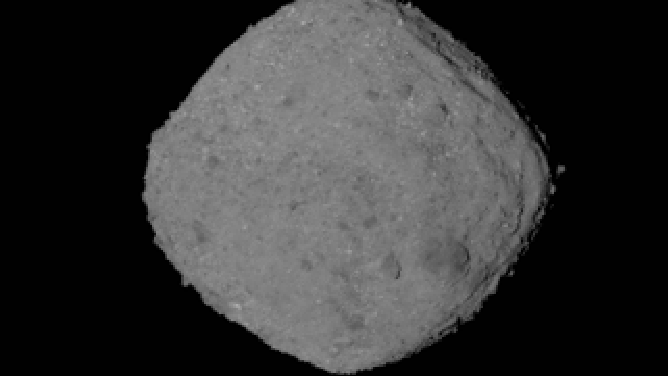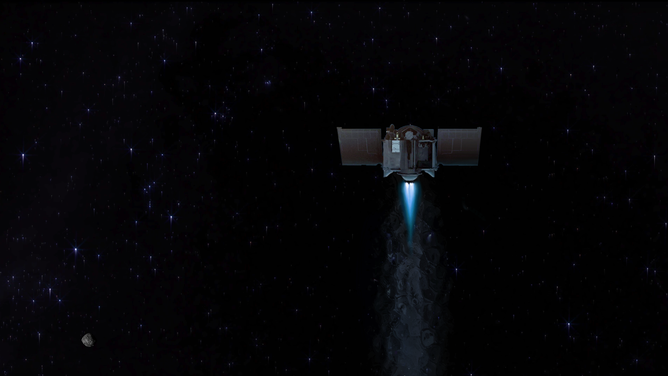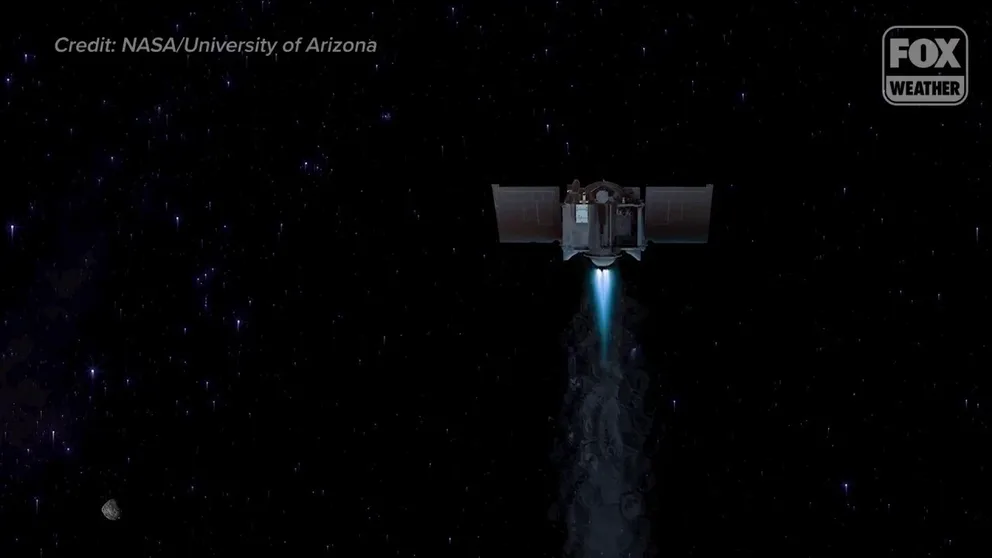NASA spacecraft takes next steps to drop off asteroid bits in Utah
If all goes well, a bit of an asteroid will land in remote Utah on Sept. 24.
NASA asteroid spacecraft gets a second mission
NASA's OSIRIS-REx spacecraft got approved for a second mission to study asteroid Apophis when it makes a close flyby of Earth in 2029.
NASA's OSIRIS-REx spacecraft is headed home, kind of.
After a 7-year journey to collect a sample from the asteroid Bennu, the spacecraft made a course correction burn on Wednesday to set it on track to drop off a special package to Earth.
OSIRIS-REx stands for Origins Spectral Interpretation Resource Identification Security Regolith Explorer. In 2020, the spacecraft collected an estimated 2 pounds of asteroid rocks and dirt known as regolith. The spacecraft has been en route to send a capsule back to Earth with pieces of asteroid.

This set of images shows the asteroid Bennu rotating for one full revolution. Over a 4-hour and 11-minute period on Nov. 2, the PolyCam camera on NASA’s OSIRIS-REx spacecraft acquired a 2.5-millisecond image for every 10 degrees of the asteroid’s rotation. (Image: NASA/Goddard/University of Arizona)
(NASA/Goddard/University of Arizona)
According to NASA, the spacecraft fired its thrusters for just over a minute to get itself onto a course closer to Earth. Initial tracking data shows OSIRIS-REx increased its speed and direction by the tiny amount needed to get close enough to drop off the asteroid sample.
'LOSS OF SIGNAL:' NASA SUCCESSFULLY CRASHES DART SPACECRAFT INTO ASTEROID FOR PLANETARY DEFENSE
If all goes well, a bit of an asteroid will land in remote Utah on Sept. 24. The capsule shaped like a tiny spacecraft will slow down for landing with the help of parachutes.
After landing, scientists hope to study the sample to learn how to deflect potentially dangerous asteroids and to understand more about how our solar system formed. Bennu likely contains materials that date back to the formation of our planets.

An artist rendering of OSIRIS-REx (Image: NASA/University of Arizona)
As of Wednesday, the spacecraft was about 24 million miles from Earth traveling at about 22,000 mph. The trajectory maneuver was one of the final steps before OSIRIS-REx completes its mission. Two more adjustments will happen on Sept. 10 and 17, setting up the spacecraft for the precise point it needs to release the capsule.
EVERYTHING SCIENTISTS WOULD WANT TO KNOW IF AN ASTEROID WAS HEADING TOWARD EARTH
After the drop-off, OSIRIS-REx will begin a new mission to study near-Earth asteroid Apophis. On the next leg of its journey, the spacecraft will be called OSIRIS-APEX.
Instead of chasing down an asteroid, this time, OSIRIS-APEX will wait for its subject. Asteroid Apophis is set to make a close flyby of Earth in 2029, close enough to see it with the naked eye.
